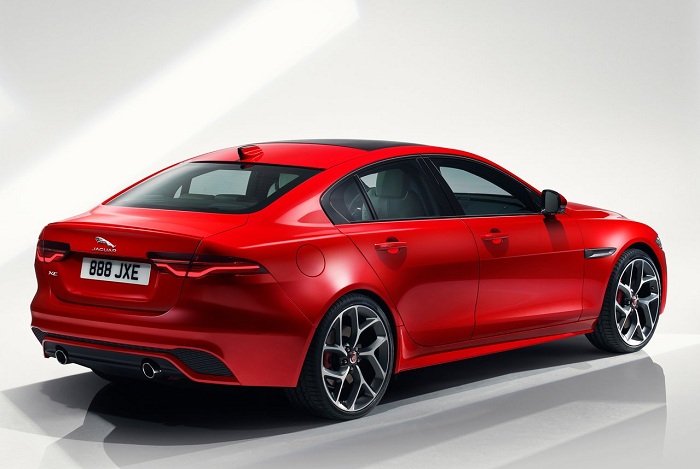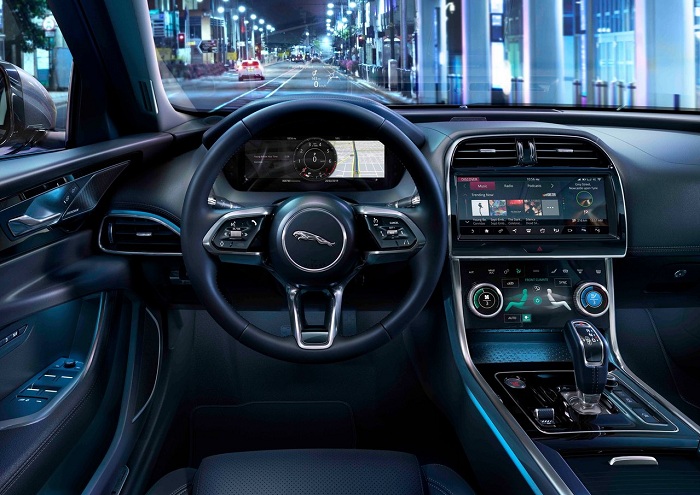Externally, the XE’s changes require a keen eye where it now sports a wider grille, redesigned front and rear bumpers, slimmer LED head-and-taillights, a colour coded faux diffuser and on model fitted with the sporty R-Dynamic bodykit, air vents located on the flanks of the bumpers complete with dark mesh detailing.
Panned extensively for its inherent lack of premium feel since debuting, the XE’s interior is said to have been “enhanced with greater attention to detail” and with “improved storage”, with upgraded materials in a series of finishes, new door cards and improved seats starting the updates off.

Taken from the I-Pace, the XE also receives the dual Touch Pro Duo infotainment system consisting of the larger 10-inch unit and a smaller 5.5-inch setup that replaces the various switches for the climate control. As well as receiving a wireless smartphone charger, the XE can be optionally specified with an all-digital 12.3-inch instrument cluster dubbed Interactive Driver Display, while the previous rotary dial for the automatic gearbox has been dropped in favour of the stubby gear lever derived from the Range Rover Evoque.
In terms of the model selected, new driver assistance systems include a full-colour Heads Up Display, the ClearSight rear-view mirror, Lane Departure Warning with directional indicators, Driver Condition Monitor, Auto High Beam Assist with optional Matrix LED headlights and the so-called Smart Settings system that uses artificial intelligence to learn the preference of the driver in order to automatically adjust functions such as the climate control, seats and entertainment. Also new are four interior packs available from the options list, namely the Dynamic Handling Pack, Cold Climate Pack, Premium Interior Upgrade Pack, Convenience Pack and the Technology Pack.

Depending on the market, the XE will be offered in three trim levels; S, SE and HSE with the R-Dynamic option on both, and with motivation coming from a single Ingenium turbocharged petrol and turbodiesel engine, both displacing 2.0-litres.
Continuing to ride on the aluminium Premium Lightweight Architecture(PLA) also known as D7a, the sole diesel model carries over the D180 designation and produces 132kW/430Nm. In the case of the petrol, two states of tune are offered; 184kW365Nm in the P250 and 221kW/400Nm in the P300. On all models drive is routed to the rear wheels via an eight-speed automatic gearbox, though all-wheel drive remains an option along with JaguarDrive Control Interface with four modes; Eco, Comfort, Rain/Ice/Snow and Dynamic.
No local launch date has yet been announced.
















